

CBD Oil for Athletes and Sports Recovery
Understanding CBD Oil and its Benefits for Athletes
As athletes, we constantly push our bodies to the limit, striving for peak performance and optimal recovery. However, rigorous training sessions and intense competitions can take a toll on our bodies, leading to sore muscles, inflammation, and fatigue. In recent years, CBD oil has emerged as a popular natural remedy for athletes seeking effective recovery solutions without the potential side effects of traditional pain medications. In this comprehensive guide, we’ll explore the benefits of CBD oil for athletes and its potential impact on sports recovery.
What is CBD Oil?
CBD, short for cannabidiol, is a natural compound found in the cannabis plant. Unlike its counterpart THC (tetrahydrocannabinol), CBD is non-psychoactive, meaning it doesn’t produce the “high” commonly associated with marijuana use. Instead, CBD interacts with the body’s endocannabinoid system, which plays a key role in regulating various physiological functions, including pain perception, inflammation, and immune response. CBD oil is made by extracting CBD from the cannabis plant and diluting it with a carrier oil, such as coconut or hemp seed oil, to create a potent and easily consumable product.
The Benefits of CBD Oil for Athletes

One of the primary reasons athletes are turning to CBD oil is its potential to alleviate pain and inflammation, two common issues experienced during intense training sessions and competitions. Studies have shown that CBD possesses anti-inflammatory properties, which can help reduce swelling and discomfort associated with muscle soreness and injuries. Additionally, CBD may help regulate pain perception by interacting with neurotransmitters in the brain, offering a natural alternative to traditional painkillers.
Furthermore, CBD oil may aid in faster recovery by promoting better sleep quality and reducing stress and anxiety levels. Quality sleep is essential for muscle repair and growth, and CBD has been shown to have a calming effect on the nervous system, making it easier for athletes to unwind and achieve restful sleep after demanding workouts. Moreover, CBD’s anxiolytic properties can help athletes manage pre-performance jitters and post-competition stress, allowing for quicker recovery and improved overall well-being.
The Legality of CBD Oil in Sports
While CBD oil has gained widespread popularity among athletes, it’s essential to address the legality of its use in sports. In 2018, the World Anti-Doping Agency (WADA) removed CBD from its list of prohibited substances, signaling a shift in attitude towards the use of CBD in competitive sports. As a result, many professional athletes now openly endorse CBD products for their therapeutic benefits without fear of sanctions or penalties. However, it’s crucial to note that WADA still prohibits the use of THC, the psychoactive compound found in cannabis, above a certain threshold. Therefore, athletes must ensure that their CBD products contain negligible levels of THC to avoid any potential violations of anti-doping regulations.
Choosing the Right CBD Products
With the growing popularity of CBD oil, the market is flooded with a variety of products, ranging from oils and tinctures to capsules, edibles, and topical creams. When selecting CBD products for sports recovery, it’s essential to opt for high-quality, third-party tested products from reputable brands. Look for products made from organic hemp, free of pesticides, heavy metals, and other contaminants. Additionally, consider the concentration of CBD in the product, as higher potency oils may offer more pronounced effects, especially for athletes dealing with chronic pain or inflammation.
Finding the Optimal Dosage
Determining the right dosage of CBD oil can be challenging, as individual responses vary depending on factors such as body weight, metabolism, and the severity of symptoms. It’s recommended to start with a low dose and gradually increase it until the desired effects are achieved. Athletes may benefit from taking CBD oil sublingually (under the tongue) for faster absorption into the bloodstream, or they can incorporate CBD-infused edibles or beverages into their pre or post-workout routine for sustained effects.
Integrating CBD into Pre and Post-Workout Rituals
Many athletes find that incorporating CBD into their pre and post-workout rituals enhances their overall training experience and promotes faster recovery. Before a workout, some athletes use CBD to help calm pre-performance nerves and improve focus and concentration. CBD’s anxiolytic properties can help reduce performance-related anxiety and promote a state of relaxation without impairing cognitive function, allowing athletes to approach their workouts with a clear mind and heightened awareness.
Post-workout, athletes may use CBD oil to alleviate muscle soreness and inflammation, facilitating quicker recovery and minimizing downtime between training sessions. CBD’s anti-inflammatory properties can help reduce swelling and discomfort, while its analgesic effects may provide relief from exercise-induced pain. Additionally, CBD’s ability to promote restful sleep can support muscle repair and growth during the recovery phase, ensuring athletes wake up feeling refreshed and rejuvenated for their next workout.
Read Also : Exploring the Different Types of CBD Products and Their Uses
Conclusion
In conclusion, CBD oil holds promise as a natural remedy for athletes seeking effective recovery solutions and performance enhancement without the potential side effects of traditional medications. By incorporating CBD into their training and recovery routines, athletes can experience relief from pain and inflammation, improved sleep quality, and enhanced overall well-being. However, it’s essential for athletes to prioritize safety and legality when using CBD products, ensuring they comply with anti-doping regulations and choose high-quality, third-party tested products from reputable brands. With careful consideration and proper dosage, CBD oil can be a valuable addition to an athlete’s arsenal, helping them achieve their fitness goals and perform at their best.
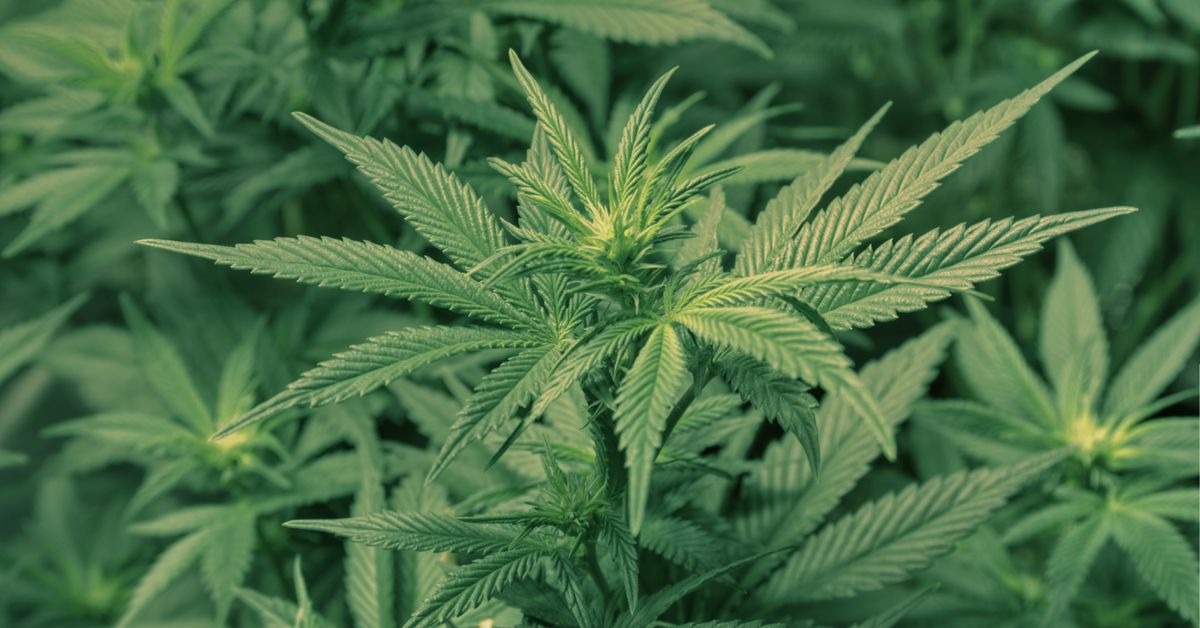

CBG For Pain Relief – How Does It Actually Work?
Introduction
In the evolving landscape of natural health solutions, Cannabigerol (CBG), a less known cannabinoid compared to its famous counterpart CBD, is gaining attention for its potential benefits in pain management. This blog aims to delve into how CBG works for pain relief, supported by scientific research and practical insights.
Understanding Cannabinoids and CBG
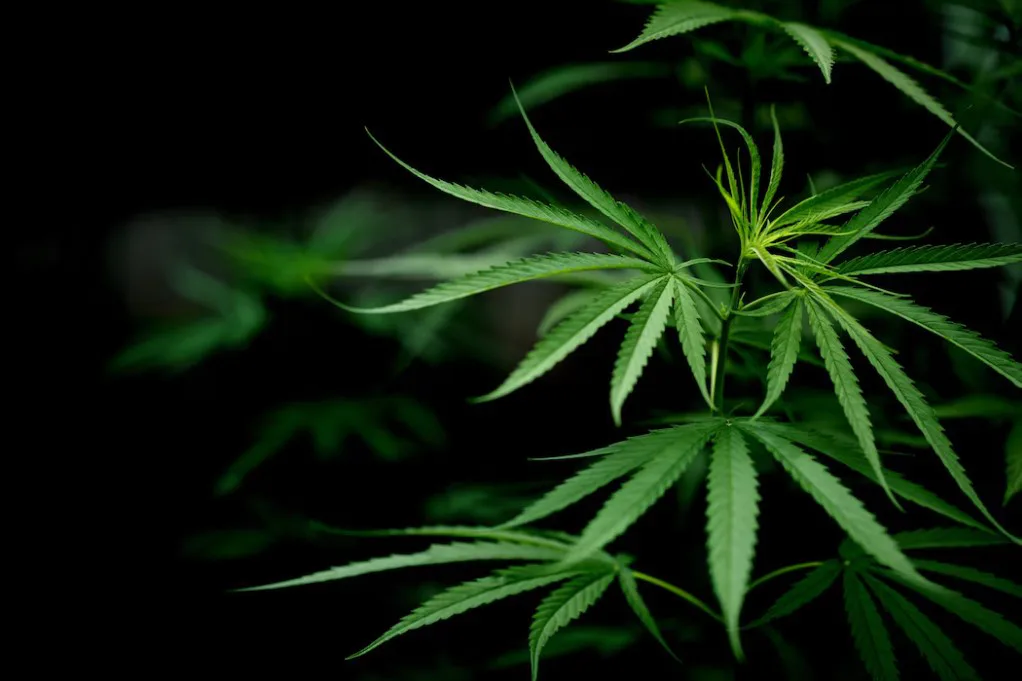
Cannabinoids are chemical compounds found in the cannabis plant that interact with the human body’s endocannabinoid system (ECS). The ECS plays a pivotal role in maintaining homeostasis in the body, influencing functions such as sleep, mood, appetite, and pain sensation. While Tetrahydrocannabinol (THC) and Cannabidiol (CBD) are the most studied cannabinoids, CBG is emerging as a promising therapeutic agent due to its unique properties.
CBG is often referred to as the “mother of all cannabinoids” because other cannabinoids, including THC and CBD, are derived from its acidic form, CBGA (cannabigerolic acid). Unlike THC, CBG is non-psychoactive, which means it doesn’t produce the “high” associated with cannabis but offers potential health benefits.
The Science Behind CBG and Pain Relief
CBG’s mechanism in pain relief is linked to its interaction with the ECS, particularly its ability to bind to both CB1 and CB2 receptors in the nervous system. These receptors are involved in the modulation of pain signals in the body. By interacting with these receptors, CBG may help reduce the perception of pain and alleviate inflammation, which is often a contributing factor in chronic pain conditions.
CBG’s Anti-inflammatory Properties
Research indicates that CBG can act as a potent anti-inflammatory agent. Inflammation is a natural response of the body’s immune system to injury or infection, but chronic inflammation can lead to persistent pain and various health issues. Studies have shown that CBG can inhibit the release of inflammatory molecules, which can help in conditions like arthritis, where inflammation plays a crucial role in pain.
Analgesic Effects of CBG
Besides its anti-inflammatory properties, CBG has been shown to have analgesic (pain-relieving) effects. This is believed to be due to CBG’s ability to increase the levels of anandamide in the body. Anandamide, often called the “bliss molecule,” is a naturally occurring cannabinoid that helps regulate pain and boost mood. By enhancing anandamide levels, CBG may help alleviate pain and improve overall well-being.
Neuroprotective Properties
CBG also demonstrates neuroprotective properties. Neurodegenerative diseases, such as multiple sclerosis and Parkinson’s, can cause significant neuropathic pain. CBG’s potential to protect nerve cells and reduce neuroinflammation can be crucial in managing pain associated with these conditions.
Practical Insights: Using CBG for Pain Management
While the research into CBG’s effectiveness and safety is still evolving, many users and healthcare providers are exploring its potential in pain management strategies. It is available in various forms, such as oils, capsules, and topical creams, making it versatile for different needs.
Dosage and Administration
Determining the right dosage of CBG can be challenging as it depends on several factors including the individual’s body weight, the nature of the pain, and the concentration of CBG in the product used. It is generally recommended to start with a low dose and gradually increase it until the desired pain relief is achieved. Consulting with a healthcare provider familiar with cannabinoids is advisable to determine an appropriate regimen.
Combining CBG with Other Cannabinoids
There is also growing interest in the entourage effect—where combining various cannabinoids can enhance their overall therapeutic effects. Some preliminary studies suggest that combining CBG with other cannabinoids like CBD may enhance its pain-relieving properties.
Read Also : Does CBG Oil Help You Sleep ?
Conclusion
CBG presents a promising natural alternative for pain relief with its ability to modulate pain through anti-inflammatory, analgesic, and neuroprotective properties. As research continues to unfold, CBG could become a cornerstone in the management of chronic pain, offering a potential solution for those seeking relief without the psychoactive effects of THC.
While promising, it’s important to approach CBG with cautious optimism and to consult with healthcare professionals when considering it as part of a pain management strategy. As more research emerges, the scope of CBG’s efficacy and safety will become clearer, potentially leading to more widespread use in clinical settings.
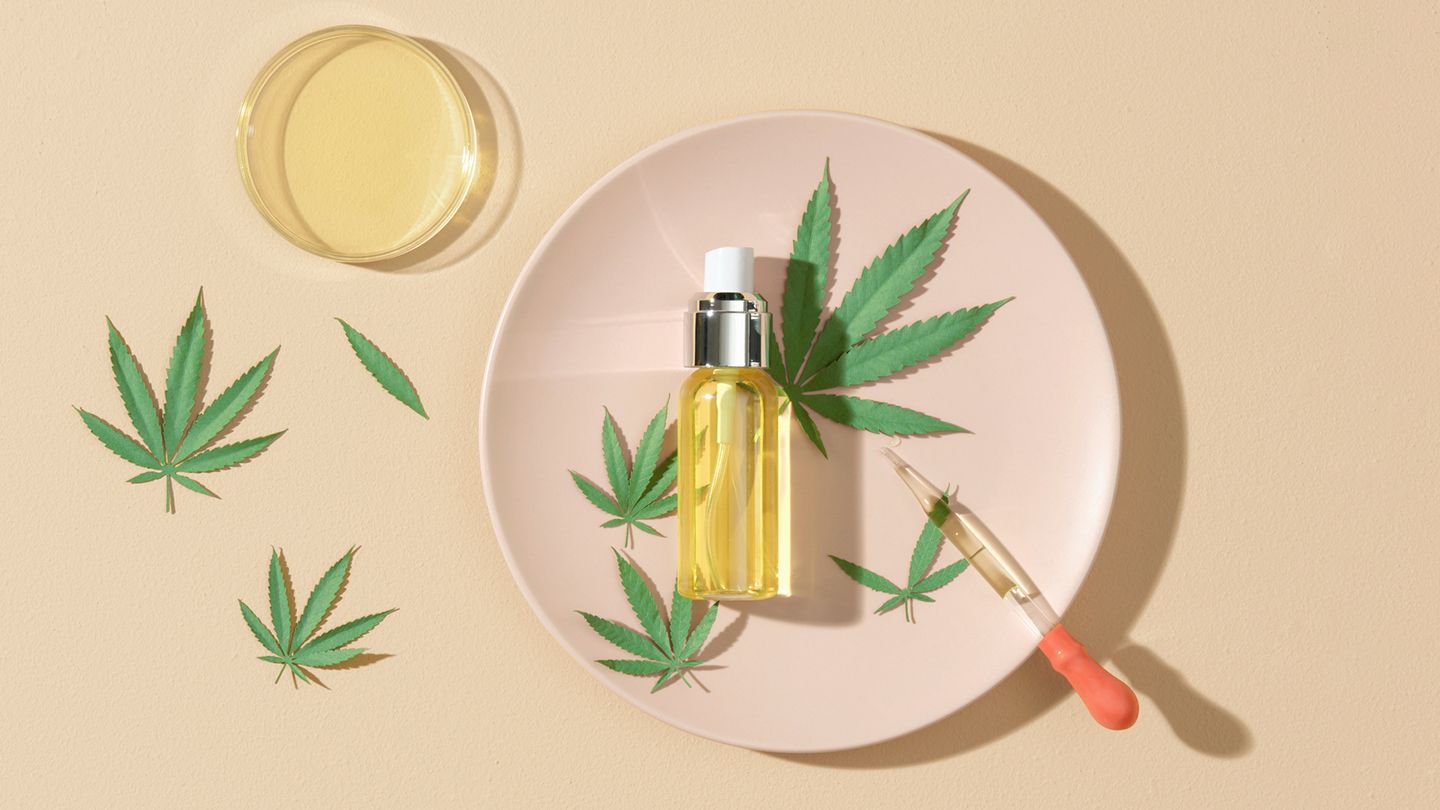

Exploring the Different Types of CBD Products and Their Uses
Introduction:
As interest in cannabidiol (CBD) continues to soar, an increasing variety of CBD products are flooding the market, offering consumers a wealth of options for incorporating CBD into their wellness routines. From oils and tinctures to edibles and topicals, the diversity of CBD products can be overwhelming for beginners and experienced users alike. In this blog, we’ll embark on a journey to explore the different types of CBD products available, their unique characteristics, and their potential uses in promoting health and well-being.
Types of CBD products

Types of CBD Products explores the diverse array of cannabidiol-infused offerings available to consumers, ranging from oils and tinctures to edibles, topicals, capsules, and more. This comprehensive guide delves into the unique characteristics, uses, and benefits of each CBD product category, empowering users to make informed choices and discover the ideal CBD solution for their wellness needs.
Also Read: CBD Oil for Menstrual Pain Relief
1. CBD Oils and Tinctures:
CBD oils and tinctures are among the most popular and versatile forms of CBD products. Typically administered sublingually, these liquid formulations are absorbed quickly into the bloodstream, offering fast-acting relief. They come in various concentrations, allowing users to adjust their dosage according to their needs. CBD oils and tinctures are commonly used for promoting relaxation, managing stress, and supporting overall wellness.
2. CBD Edibles:
CBD edibles encompass a wide range of products, including gummies, chocolates, capsules, and beverages infused with CBD. These delicious and convenient options provide a discreet way to consume CBD, making them ideal for on-the-go use. CBD edibles offer long-lasting effects, as they are metabolized in the digestive system. They are often used for promoting calmness, enhancing mood, and supporting a restful sleep.
3. CBD Topicals:
CBD topicals are applied directly to the skin and are designed to target localized areas of discomfort or inflammation. These products include creams, lotions, balms, and salves infused with CBD, as well as transdermal patches and bath bombs. CBD topicals are commonly used for relieving muscle tension, soothing sore joints, and supporting skin health.
4. CBD Capsules and Pills:
CBD capsules and pills are pre-measured doses of CBD enclosed in a convenient oral form. These products offer a precise and consistent dosage, making them suitable for users who prefer a standardized approach to CBD consumption. CBD capsules and pills are often used for managing chronic pain, reducing inflammation, and promoting relaxation.
5. CBD Vapes and Inhalables
CBD vapes and inhalables deliver CBD directly into the bloodstream through inhalation. These products include vape oils, cartridges, concentrates, and inhalable powders. Inhalable CBD offers rapid absorption and immediate effects, making it a popular choice for users seeking fast relief from symptoms such as anxiety or acute pain.
Conclusion:
The wide variety of CBD products available reflects the growing interest and demand for cannabidiol as a natural wellness remedy. Whether you prefer the convenience of oils and tinctures, the deliciousness of edibles, the targeted relief of topicals, or the fast-acting effects of inhalables, there’s a CBD product to suit every preference and lifestyle. By exploring the different types of CBD products and their uses, consumers can find the perfect CBD solution to support their health and well-being goals.


CBD Oil for Menstrual Pain Relief
Introduction:
Menstrual pain, often referred to as dysmenorrhea, affects millions of women worldwide, causing discomfort, cramps, and mood swings. While traditional remedies like painkillers can provide relief, many are turning to more natural alternatives like CBD oil. In this comprehensive guide, we’ll explore the potential benefits of CBD oil for menstrual pain relief and how it works to alleviate discomfort during menstruation.
Understanding Menstrual Pain:

Before delving into the benefits of CBD oil, it’s crucial to understand the nature of menstrual pain. Dysmenorrhea can be categorized as primary or secondary. Primary dysmenorrhea occurs due to natural menstrual cycles and is characterized by uterine contractions, while secondary dysmenorrhea is linked to underlying health conditions like endometriosis or fibroids.
Conventional Treatments vs. CBD Oil:
Many women rely on over-the-counter pain relievers like ibuprofen or acetaminophen to manage menstrual cramps. While these medications can be effective, they may come with side effects and risks, especially with prolonged use. CBD oil, derived from the cannabis plant, offers a natural alternative without the psychoactive effects associated with THC.
How CBD Oil Works for Menstrual Pain Relief:
CBD interacts with the body’s endocannabinoid system (ECS), which plays a crucial role in regulating various bodily functions, including pain perception and inflammation. By targeting cannabinoid receptors in the ECS, CBD oil can help alleviate pain and discomfort associated with menstruation. Additionally, CBD possesses anti-inflammatory properties that can reduce swelling and inflammation in the pelvic area.
Research on CBD and Menstrual Pain:
While research on CBD specifically for menstrual pain is limited, several studies have investigated its effectiveness in managing chronic pain and inflammation. A 2015 review published in the Journal of Neuroimmune Pharmacology suggested that CBD could modulate pain perception and reduce inflammation through its interaction with cannabinoid receptors.
Furthermore, a 2019 study published in the Journal of Clinical Investigation found that CBD could reduce both inflammation and neuropathic pain associated with conditions like arthritis. While these studies focus on chronic pain rather than menstrual pain specifically, their findings support the potential benefits of CBD for managing pain and inflammation.
Personal Testimonials and Anecdotal Evidence:
In addition to scientific research, many women have reported positive experiences with using CBD oil for menstrual pain relief. Personal testimonials often highlight CBD’s ability to provide quick and effective relief from cramps and discomfort without the side effects commonly associated with traditional painkillers.
Dosage and Administration:
When using CBD oil for menstrual pain relief, it’s essential to start with a low dosage and gradually increase until you find the optimal level for your needs. CBD oil can be consumed orally, sublingually, or topically. Sublingual administration, where the oil is held under the tongue for faster absorption, is often preferred for quicker relief. However, topical applications like CBD-infused creams or balms can also provide targeted relief to the affected area.
Choosing Quality CBD Products:
With the growing popularity of CBD, it’s essential to choose high-quality products from reputable manufacturers. Look for CBD oils that are derived from organically grown hemp and undergo third-party testing for purity and potency. Additionally, opt for full-spectrum CBD oils, which contain a wide range of cannabinoids, terpenes, and other beneficial compounds that work synergistically to enhance the oil’s effectiveness.
Potential Side Effects and Precautions:
While CBD is generally well-tolerated, some individuals may experience side effects such as drowsiness, dry mouth, or changes in appetite. It’s crucial to consult with a healthcare professional before incorporating CBD oil into your menstrual pain management routine, especially if you’re pregnant, breastfeeding, or taking other medications.
Conclusion:
CBD oil offers a promising natural alternative for women seeking relief from menstrual pain and discomfort. Its ability to modulate pain perception, reduce inflammation, and provide relaxation makes it a valuable addition to the toolkit for managing period symptoms. However, more research is needed to fully understand the efficacy and safety of CBD for menstrual pain relief. By choosing high-quality products and consulting with healthcare professionals, women can harness the potential benefits of CBD oil to alleviate period-related discomfort and improve their overall quality of life.
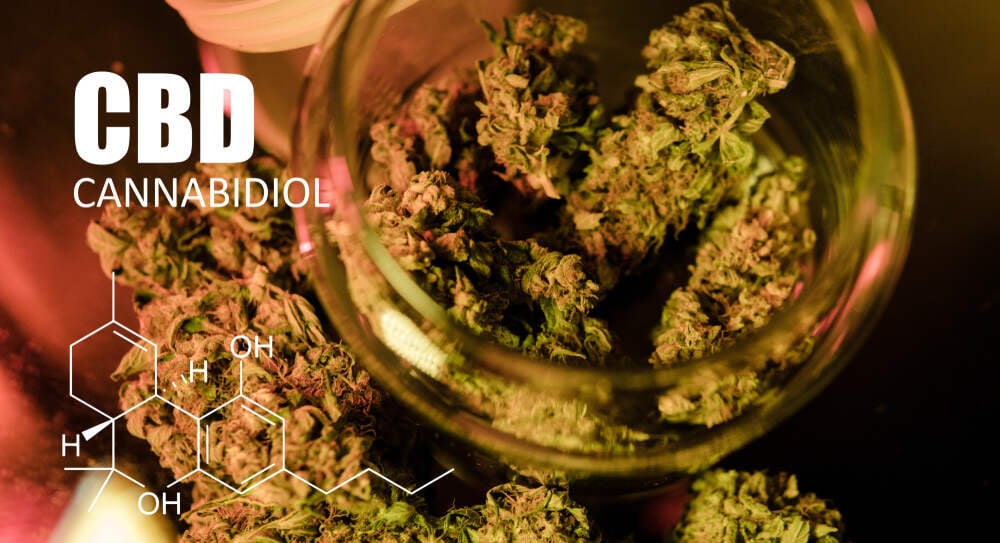
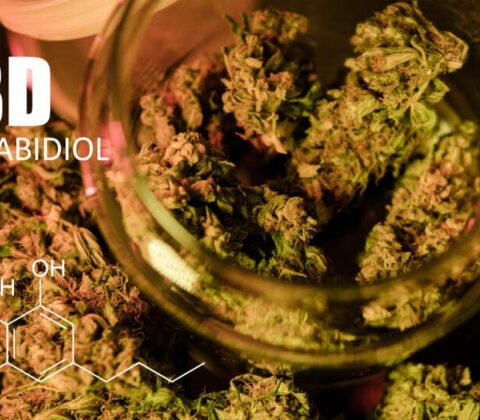
Unlocking the Healing Potential: High CBD Seeds and Their Medicinal Benefits
In the ever-evolving landscape of cannabis cultivation, Best high CBD seeds have emerged as a beacon of hope for those seeking natural remedies for various ailments. As society becomes increasingly health-conscious, the demand for CBD-rich strains continues to surge. But what exactly are high CBD seeds, and how do they unlock the healing potential of cannabis? Let’s delve into this fascinating world and explore the medicinal benefits these seeds offer.
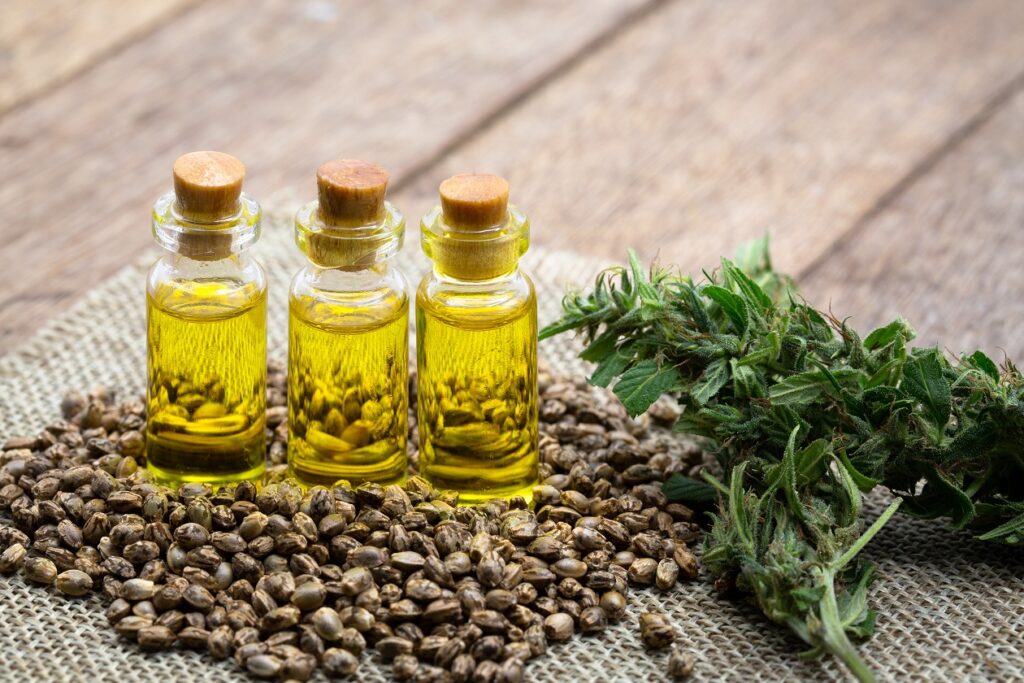
Understanding High CBD Seeds: A Primer
Before diving into their medicinal benefits, it’s crucial to grasp what high CBD seeds are and how they differ from their high THC counterparts. CBD, short for cannabidiol, is one of the many cannabinoids found in the cannabis plant. Unlike THC (tetrahydrocannabinol), CBD is non-psychoactive, meaning it doesn’t induce the “high” typically associated with cannabis use. High CBD seeds are specifically bred to produce plants with elevated levels of CBD and minimal THC content, making them ideal for medicinal purposes.
The Medicinal Potential of CBD: A Comprehensive Overview
1. Pain Management and Inflammation Reduction
One of the most well-known medicinal benefits of CBD is its ability to alleviate pain and reduce inflammation. Numerous studies have shown that CBD interacts with the body’s endocannabinoid system, which plays a crucial role in regulating pain sensation. From chronic conditions like arthritis to acute injuries, high CBD strains offer a natural alternative to traditional painkillers with fewer side effects.
2. Anxiety and Stress Relief
In today’s fast-paced world, anxiety and stress have become prevalent issues affecting millions of people worldwide. Fortunately, CBD has shown promise as an effective remedy for anxiety disorders and stress-related symptoms. By modulating neurotransmitter activity in the brain, CBD can promote feelings of relaxation and calmness without the intoxicating effects of THC.
3. Neuroprotective Properties
Another area where high CBD seeds shine is in their neuroprotective properties. Research suggests that CBD may help protect neurons from damage and degeneration, making it a potential therapeutic option for neurodegenerative diseases like Alzheimer’s and Parkinson’s. Additionally, CBD’s anti-inflammatory effects may contribute to overall brain health and cognitive function.
4. Epilepsy and Seizure Disorders
Perhaps one of the most well-documented medicinal applications of CBD is in the treatment of epilepsy and seizure disorders. In fact, the FDA has approved a CBD-based medication called Epidiolex for the treatment of certain types of seizures. High CBD strains offer hope to patients who have not responded well to traditional antiepileptic drugs, providing a natural alternative with fewer adverse effects.
5. Sleep Disorders
Quality sleep is essential for overall health and well-being, yet many people struggle with sleep disorders like insomnia and sleep apnea. CBD may offer relief for individuals experiencing sleep disturbances by promoting relaxation and reducing anxiety levels. High CBD strains with calming effects can help improve sleep quality and duration, leading to a more restful night’s sleep.
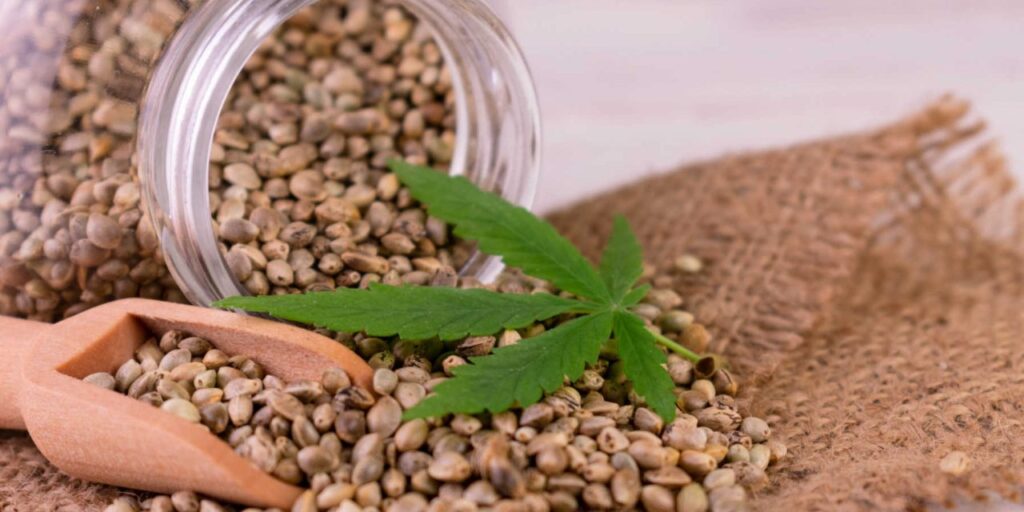
Cultivating Wellness: Incorporating High CBD Seeds into Your Garden
Now that we’ve explored the myriad medicinal benefits of high CBD seeds, you may be wondering how to incorporate them into your garden. Fortunately, cultivating these strains is relatively straightforward, especially with the wealth of resources and information available to today’s growers.
When selecting high CBD seeds, it’s essential to choose reputable breeders known for their commitment to quality and consistency. Look for strains with a balanced CBD to THC ratio and consider factors like growing environment, flowering time, and desired effects.
Once you’ve acquired your high CBD seeds, proper cultivation techniques are key to maximizing their medicinal potential. Ensure your plants receive adequate sunlight, water, and nutrients throughout their growth cycle, and monitor for any signs of pests or diseases.
Conclusion: Harnessing the Power of High CBD Seeds for Health and Healing
In conclusion, high CBD seeds offer a wealth of medicinal benefits that have the potential to transform lives and improve overall well-being. From pain management and anxiety relief to neuroprotection and sleep enhancement, CBD-rich strains hold promise as natural remedies for a wide range of ailments.
As society continues to embrace the therapeutic potential of cannabis, high CBD seeds will undoubtedly play a central role in the future of medicinal cannabis cultivation. By unlocking the healing potential of these seeds, we can cultivate wellness and vitality for ourselves and future generations.


Does CBG Oil Help You Sleep ?
Introduction:
In recent years, there has been a surge in interest surrounding cannabinoids and their potential health benefits. While CBD (cannabidiol) has dominated the spotlight for its various therapeutic properties, another cannabinoid called CBG (cannabigerol) is starting to gain attention for its potential role in improving sleep quality. In this article, we will delve into the science behind CBG oil and its effects on sleep, exploring its mechanisms of action and the available research on its efficacy.
Understanding CBG:

CBG, like CBD, is a non-psychoactive cannabinoid found in the cannabis plant. It is often referred to as the “mother cannabinoid” because it is the precursor to other cannabinoids such as THC and CBD. Although CBG is present in smaller quantities compared to CBD and THC, researchers are increasingly interested in its potential therapeutic effects.
Mechanisms of Action:
CBG interacts with the endocannabinoid system (ECS), a complex network of receptors and neurotransmitters that play a crucial role in regulating various physiological processes, including sleep. Through its interaction with the ECS, CBG may modulate neurotransmitter release, reduce inflammation, and promote relaxation, all of which are essential for a restful night’s sleep.
Research on CBG and Sleep:
While research specifically focusing on CBG’s effects on sleep is limited, several studies have investigated its potential therapeutic properties. A study published in the Journal of Pharmacology and Experimental Therapeutics found that CBG exhibited sedative effects in mice, suggesting its potential as a sleep aid. Additionally, a 2018 review published in the Cannabis and Cannabinoid Research journal highlighted CBG’s anti-inflammatory and analgesic properties, which could indirectly contribute to improved sleep quality by reducing pain and discomfort.
Anecdotal Evidence:
Although scientific evidence on CBG’s effects on sleep is still emerging, many individuals have reported positive experiences with CBG oil for sleep issues. Users have noted that CBG oil helps them relax before bedtime, reduces anxiety, and promotes a deeper, more restorative sleep. However, it’s essential to recognize that anecdotal evidence is subjective and may not always reflect scientific findings.
Potential Benefits of CBG Oil for Sleep:
Based on its pharmacological properties and anecdotal reports, CBG oil may offer several potential benefits for improving sleep quality:
- Relaxation: CBG’s interaction with the ECS may promote relaxation and reduce anxiety, making it easier to fall asleep.
- Pain Relief: CBG’s anti-inflammatory and analgesic properties may alleviate pain and discomfort, allowing for more comfortable sleep.
- Sleep Regulation: By modulating neurotransmitter release, CBG may help regulate sleep-wake cycles and promote a more consistent sleep pattern.
- Anxiety Reduction: CBG’s anxiolytic effects may help calm the mind and reduce stress levels, facilitating better sleep quality.
Safety and Side Effects:
Like CBD, CBG is generally well-tolerated and considered safe for consumption. However, individual responses to cannabinoids may vary, and some users may experience side effects such as dry mouth, dizziness, or changes in appetite. It’s essential to start with a low dose of CBG oil and gradually increase as needed while monitoring for any adverse reactions.
Conclusion:
While further research is needed to fully understand CBG’s effects on sleep, emerging evidence suggests that it may hold promise as a natural sleep aid. Its interaction with the endocannabinoid system and potential therapeutic properties make it an intriguing subject for future studies. If you’re considering trying CBG oil for sleep issues, consult with a healthcare professional to determine the appropriate dosage and ensure its compatibility with your individual needs and medical history. With cautious use and ongoing research, CBG oil could offer a new avenue for promoting restful sleep and improving overall well-being.
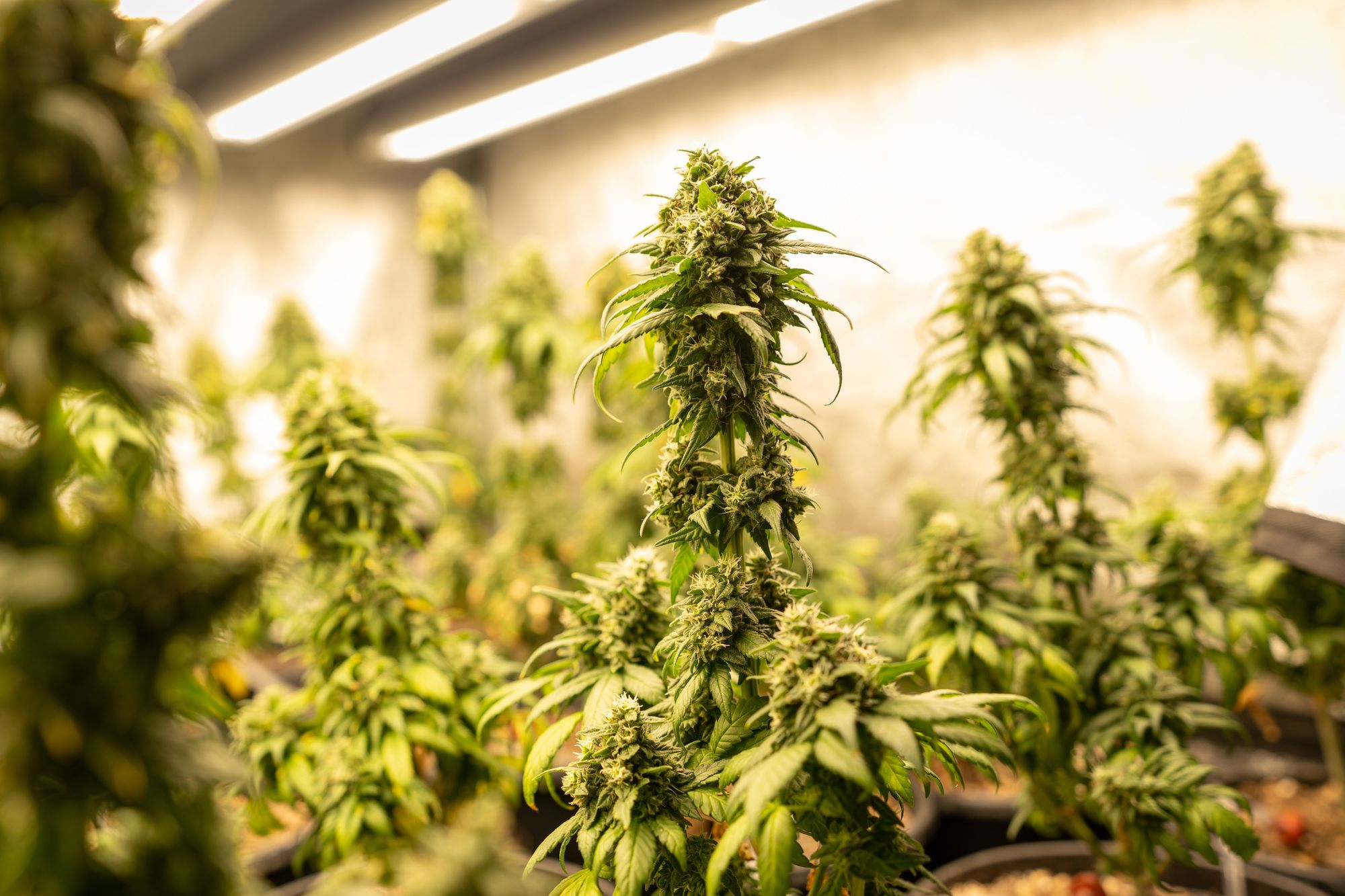
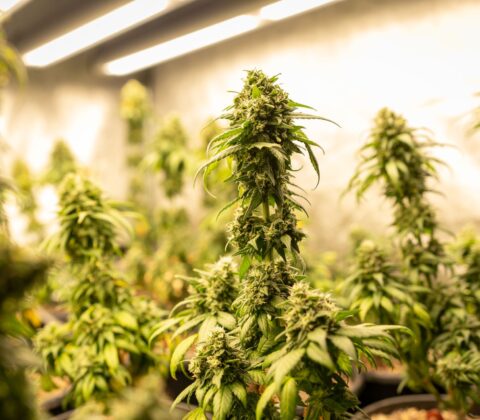
A Beginner’s Guide to Planting Cannabis Seeds Indoors
Introduction:
With the growing interest in cultivating cannabis for personal or medicinal use, many individuals are opting to grow their own plants indoors. Starting from seeds can be an exciting and rewarding journey, but it requires careful attention to detail to ensure successful growth. In this guide, we’ll walk you through the steps of planting cannabis seeds indoors, from selecting the right seeds to providing the optimal growing conditions for healthy plant development.
Choosing the Right Seeds:
Before diving into the planting process, it’s essential to choose high-quality cannabis seeds. Factors to consider when selecting seeds include genetics, strain type, and desired effects. Whether you’re looking for a high-THC strain for recreational use or a CBD-rich variety for medicinal purposes, research different strains to find the one that best suits your needs.

Additionally, ensure that you acquire seeds from a reputable source to guarantee their authenticity and viability. Look for trusted seed banks or dispensaries with a track record of providing quality seeds to avoid potential issues during the cultivation process.
Preparing the Growing Environment:
Creating an optimal growing environment is crucial for the successful cultivation of cannabis indoors. Start by setting up a dedicated grow space that offers sufficient room for your plants to thrive. Consider factors such as lighting, ventilation, temperature, and humidity control.
Investing in proper lighting is essential for promoting healthy growth during the seedling stage. While natural sunlight is ideal, many growers opt for artificial lighting options such as LED, HPS, or fluorescent grow lights. Ensure that your chosen lighting system provides the appropriate spectrum and intensity for seedling development.
Maintaining proper ventilation helps prevent issues such as mold and mildew while ensuring adequate airflow for optimal plant growth. Use exhaust fans, air filters, and oscillating fans to regulate airflow and maintain consistent environmental conditions.
Temperature and humidity play a critical role in cannabis cultivation, especially during the seedling stage. Aim for a temperature range of 70-85°F (21-29°C) and a relative humidity level of 50-70% to create a favorable environment for seed germination and early growth.
Planting Cannabis Seeds:
Once you’ve prepared your growing environment, it’s time to plant your cannabis seeds. Follow these steps for successful seedling establishment:
1. Germination:
- Start by germinating your seeds using your preferred method. Common germination techniques include placing seeds between moist paper towels or soaking them in water until they sprout.
- Keep the germination environment warm and humid to encourage the seeds to sprout. Check regularly for signs of germination, which typically occur within 1-7 days.
2. Seedling Containers:
- Choose small containers or seedling trays filled with a high-quality potting mix or seed starter soil. Ensure that the soil is well-draining and free of pests or pathogens.
- Gently place the germinated seeds into the soil, burying them about 1/4 to 1/2 inch deep. Lightly cover the seeds with soil and water gently to ensure moisture penetration.
3. Lighting and Watering:
- Position your seedlings under a light source with a 18/6 light cycle (18 hours of light, 6 hours of darkness) to promote healthy growth.
- Water your seedlings gently, ensuring that the soil remains consistently moist but not waterlogged. Avoid overwatering, as it can lead to root rot and other issues.
4. Nutrient Requirements:
- During the seedling stage, cannabis plants require minimal nutrients, as they rely on the nutrients stored in the seed casing.
- If using a nutrient-rich potting mix, wait until the second or third week of growth before introducing a diluted nutrient solution.
5. Monitoring and Care:
Once your cannabis seeds have germinated and seedlings have emerged, it’s crucial to monitor their progress and provide appropriate care. Keep an eye on the following factors:
- Growth Progress: Monitor the growth of your seedlings, ensuring that they develop healthy roots and foliage.
- Environmental Conditions: Maintain consistent temperature, humidity, and lighting levels to support optimal growth.
- Watering and Nutrient Needs: Adjust watering and nutrient schedules as your plants mature, being careful not to overfeed or underwater.
- Pest and Disease Management: Keep an eye out for signs of pests or diseases, such as yellowing leaves or unusual spots, and take prompt action to address any issues.
Expanding on the intricacies of planting cannabis seeds indoors, let’s delve deeper into each stage of the process and explore additional considerations for optimal growth and development.
Germination Techniques:
While the paper towel method and water soaking are popular germination techniques, growers can also consider alternatives such as using seedling plugs or germination cubes. These methods offer convenience and reduce the risk of damaging delicate seedlings during the transfer process.
Seedling Containers and Medium:
In addition to traditional seedling trays, growers may opt for biodegradable pots or fabric pots, which promote healthy root development and can be transplanted directly into larger containers later in the growth cycle. Choosing the right medium is crucial, with options ranging from coco coir and peat moss to soilless mixes and hydroponic systems. Each medium has its advantages and requires specific care considerations, so research and experimentation are key to finding the best fit for your growing setup.
Lighting Considerations:
While artificial lighting is essential for indoor cannabis cultivation, the choice between different lighting options can be daunting for beginners. LED grow lights are energy-efficient and offer a full spectrum of light for all growth stages, while HPS lights provide intense light output ideal for flowering. Fluorescent lights, such as T5 or CFL bulbs, are cost-effective options for seedling and vegetative growth stages. Experimenting with light intensity and distance from plants can help optimize growth and prevent issues such as stretching or light burn.
Watering Techniques:
Overwatering is a common pitfall for novice growers, leading to root suffocation and nutrient leaching. To avoid this, consider using bottom watering techniques or self-watering systems that deliver moisture directly to the root zone without saturating the soil surface. Additionally, monitoring soil moisture levels with a moisture meter or by simply feeling the soil’s texture can help determine when watering is necessary.
Nutrient Management:
While cannabis seedlings require minimal nutrients initially, transitioning to a comprehensive feeding schedule as plants mature is essential for maximizing yield and potency. Utilizing organic fertilizers or nutrient solutions tailored to cannabis cultivation ensures balanced nutrition without the risk of nutrient burn or toxicity. Pay attention to pH levels in the growing medium, as imbalances can interfere with nutrient uptake and lead to nutrient deficiencies or lockout.
Training and Pruning Techniques:
As seedlings mature into vegetative growth, employing training techniques such as topping, low-stress training (LST), or defoliation can encourage bushier growth and maximize light penetration. These methods help control plant height and shape, increasing overall yield and promoting even canopy development. However, it’s crucial to exercise caution and avoid excessive stress that could hinder plant health and productivity.
Environmental Monitoring and Control:
Investing in environmental monitoring equipment such as hygrometers, thermometers, and CO2 monitors allows growers to maintain optimal conditions throughout the entire growth cycle. Automated systems for temperature and humidity control, as well as carbon dioxide supplementation, can help fine-tune environmental parameters and mitigate stressors that impact plant health and productivity.
Conclusion:
Planting cannabis seeds indoors can be a rewarding experience for both novice and experienced growers alike. By selecting high-quality seeds, creating a suitable growing environment, and providing attentive care, you can nurture healthy seedlings and ultimately harvest your own cannabis crop. With patience, dedication, and a bit of knowledge, you’ll be well on your way to enjoying the fruits of your labor.

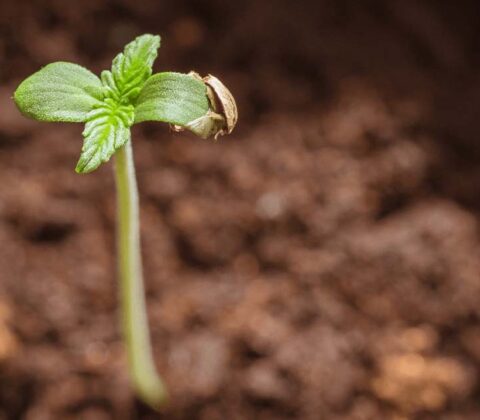
Unlocking the Advantages of Autoflowering Cannabis Seeds
Introduction
Autoflowering cannabis seeds have gained immense popularity among both novice and experienced cannabis growers in recent years. These seeds offer a unique set of advantages that make them a preferred choice for many cultivators. In this comprehensive guide, we will delve into the fascinating world of autoflowering cannabis seeds, exploring their benefits, characteristics, and how to maximize your yields when growing them.
The Advantages of Autoflowering Cannabis Seeds
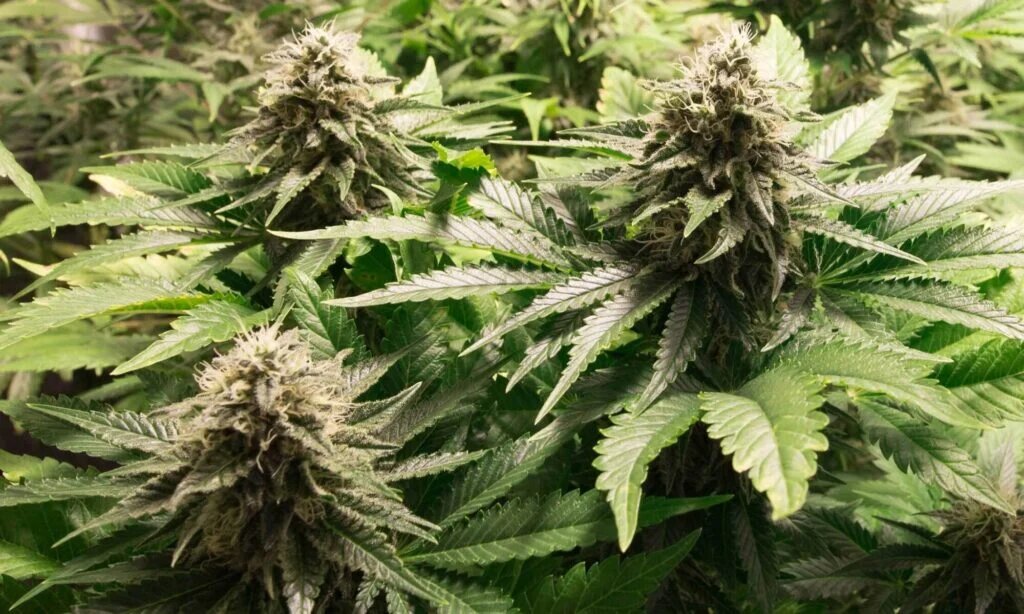
- Quick Harvests: One of the standout benefits of autoflowering cannabis seeds is their rapid growth cycle. Unlike photoperiod strains that rely on specific light schedules to flower, autoflowers start flowering automatically after a few weeks, regardless of the light cycle. This significantly shortens the time from seed to harvest, allowing for multiple harvests in a single growing season.
- Compact Size: Autoflowering cannabis plants tend to stay relatively small in stature, making them ideal for growers with limited space. Whether you’re cultivating in a small closet or on a balcony, these plants can thrive without taking up too much room.
- Stealth and Discreetness: Their compact size also makes autoflowers discreet and less conspicuous. They are perfect for growers who need to keep their cultivation activities under the radar.
- Resilience and Hardiness: Autoflowers are known for their resilience and ability to withstand adverse conditions. They are naturally more robust and less susceptible to pests and diseases, making them an excellent choice for beginners.
- Continuous Harvests: With staggered planting, autoflowering seeds can provide a continuous supply of cannabis throughout the year, ensuring a fresh and consistent yield.
- Reduced Light Requirements: Unlike photoperiod strains that demand precise light control, autoflowers are less finicky. They can thrive under less than ideal lighting conditions, making them suitable for growers who lack sophisticated grow setups.
- Pest and Disease Resistance: Autoflowering cannabis seeds often exhibit higher resistance to pests and diseases compared to photoperiod strains. Their robust genetics make them less susceptible to common cannabis issues like spider mites, powdery mildew, and mold. This resistance can be a lifesaver for growers, especially those who are just starting and might not have the experience to deal with such problems effectively.
- Discreet Outdoor Cultivation: If you’re growing cannabis outdoors and need to keep your plants hidden, autoflowers are a fantastic choice. Due to their smaller size and faster growth, they are less likely to attract unwanted attention. Whether you’re growing on a balcony, in your backyard, or in a remote location, autoflowers can be discreetly cultivated without drawing too much notice.
- Versatility in Growing Mediums: Autoflowering cannabis plants can thrive in various growing mediums, including soil, coco coir, and hydroponics. This versatility allows growers to choose the medium that best suits their preferences and experience level. Additionally, their adaptability means that you can experiment with different techniques and find the one that works best for you.
- Ideal for Continuous Cultivation: With autoflowering cannabis, you can set up a perpetual harvest cycle by planting new seeds every few weeks. This means you can enjoy a constant supply of fresh cannabis buds, eliminating the need to stockpile large quantities. It’s a convenient way to maintain a manageable and sustainable cannabis garden.
- Lower Energy Costs: Thanks to their reduced light requirements, autoflowering cannabis plants can save you money on energy bills. They can thrive under less intense lighting setups, such as compact fluorescent lights (CFLs) or LED grow lights, which consume less electricity compared to high-intensity discharge (HID) lights. This energy efficiency can be particularly appealing for indoor growers looking to minimize their operational costs.
- High Potency and Flavor: While some earlier autoflowering strains had a reputation for lower potency, modern genetics have evolved significantly. Many autoflowering strains now offer impressive levels of THC and CBD, along with a wide range of flavors and aromas. Whether you prefer a relaxing Indica or an uplifting Sativa, there’s likely an autoflowering strain to suit your taste.
- Perfect for Experimentation: If you’re an experimental grower looking to try different cultivation techniques or develop your unique strains, autoflowering cannabis seeds provide an excellent platform. Their shorter life cycle allows you to conduct multiple experiments in a relatively short time, helping you refine your skills and discover what works best for your specific goals.
Optimizing Your Autoflowering Cannabis Grow
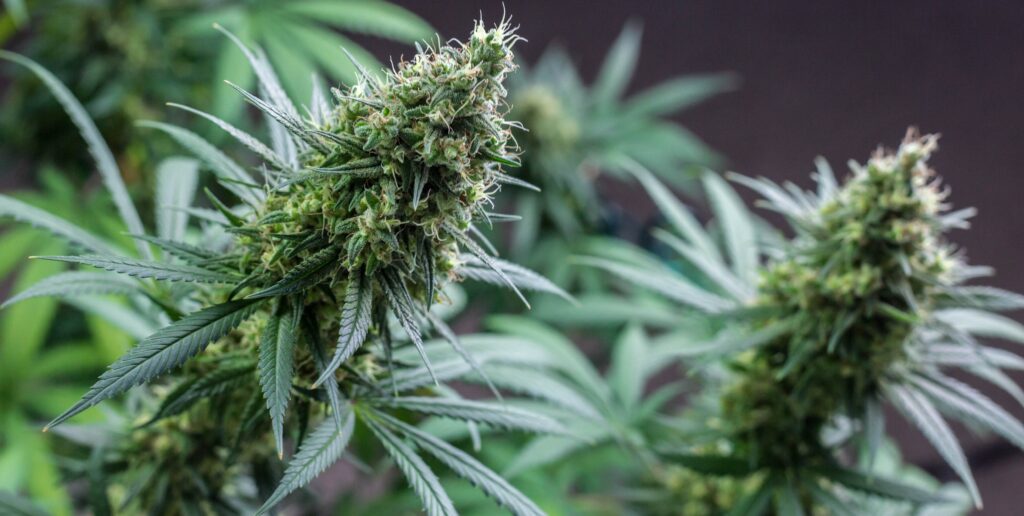
- Selecting the Right Strain: Autoflowering cannabis comes in various strains, each with its unique flavor profile, potency, and growth characteristics. Research and choose a strain that aligns with your preferences and goals.
- Proper Planning: Because of their short growth cycle, autoflowers require meticulous planning. Ensure you have all your supplies ready, including nutrients, pots, and lighting, before starting your grow.
- Lighting: While autoflowers are less demanding when it comes to light, providing them with sufficient light is crucial for maximizing yields. Many growers opt for 18-20 hours of light per day during the vegetative phase and 12 hours during flowering.
- Nutrient Management: Autoflowers tend to prefer milder nutrient solutions compared to their photoperiod counterparts. Overfeeding can lead to nutrient burn, so monitor your plants closely and adjust nutrient levels accordingly.
- Pruning and Training: While not as extensive as with photoperiod plants, some light pruning and training can help optimize light penetration and overall growth. However, be gentle to avoid stressing the plants.
- Harvest Timing: Autoflowers have a fixed life cycle, so it’s essential to monitor the trichomes for the right harvest time. A magnifying glass can help you determine when to harvest for the desired potency and flavor.
Conclusion
Unlocking the advantages of autoflowering cannabis seeds can revolutionize your cultivation experience. Their speed, resilience, and compact size make them a fantastic choice for both beginners and seasoned growers. By selecting the right strain and carefully managing your grow, you can enjoy consistent, high-quality yields throughout the year. Whether you’re looking for a discreet, low-maintenance option or want to explore a new dimension of cannabis cultivation, autoflowering seeds offer a world of possibilities. So, give them a try and experience the benefits of this remarkable cannabis variety for yourself. Happy growing!


A Comprehensive Guide to Cannabis Seeds and Harvest Season
Introduction
The popularity of Cannabis has surged in recent years, thanks to its potential health benefits and non-intoxicating properties. Many individuals are now interested in growing their own CBD-rich cannabis plants. To embark on this journey successfully, it’s essential to understand the basics of Cannabis seeds, cultivation, and the optimal harvest season. In this comprehensive guide, we’ll delve into Cannabisseeds, the cultivation process, and the ideal time for harvesting your CBD-rich cannabis plants.
Cannabis Seeds – The Foundation of Your Crop
What are Cannabis Seeds?
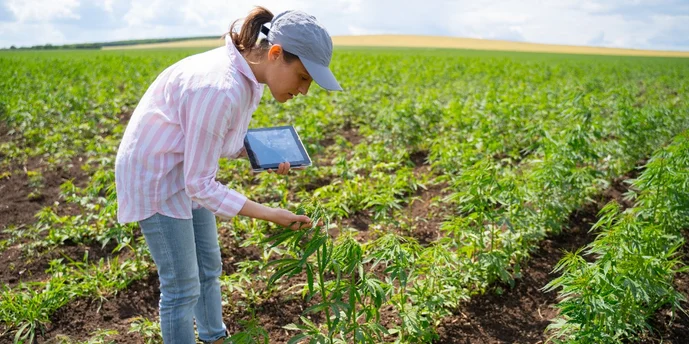
CBD seeds, also known as hemp seeds, are the starting point for growing CBD-rich cannabis plants. These seeds are specifically bred to produce plants with high Cannabis content and minimal levels of tetrahydrocannabinol (THC), the psychoactive compound found in cannabis. Selecting the right Cannabis seeds is crucial to ensure a successful and legal cultivation process.
Types of CBD Seeds
There are various types of Cannabis seeds available, depending on your preferences and goals:
- High-CBD Low-THC Seeds: These seeds produce plants with a high CBD-to-THC ratio, making them suitable for medicinal purposes while minimizing psychoactive effects.
- Auto-flowering Seeds: Auto-flowering Cannabis seeds are known for their ability to start flowering based on age rather than light cycles, making them suitable for indoor and outdoor cultivation.
- Feminized Seeds: These seeds produce female plants exclusively, eliminating the need to remove male plants during cultivation, which can help maximize Cannabis yield.
- CBD-Rich Strains: Different strains of CBD-rich cannabis plants offer varying terpene profiles and flavors. Research and choose a strain that suits your preferences.
Sourcing Quality CBD Seeds
When acquiring Cannabis seeds, it’s essential to purchase them from reputable seed banks or breeders. Look for seeds with clear documentation of CBD and THC levels, as well as any additional information about the strain’s characteristics. Legitimate sources will provide this information to help you make an informed choice.
Cultivation Basics for CBD-Rich Cannabis Plants
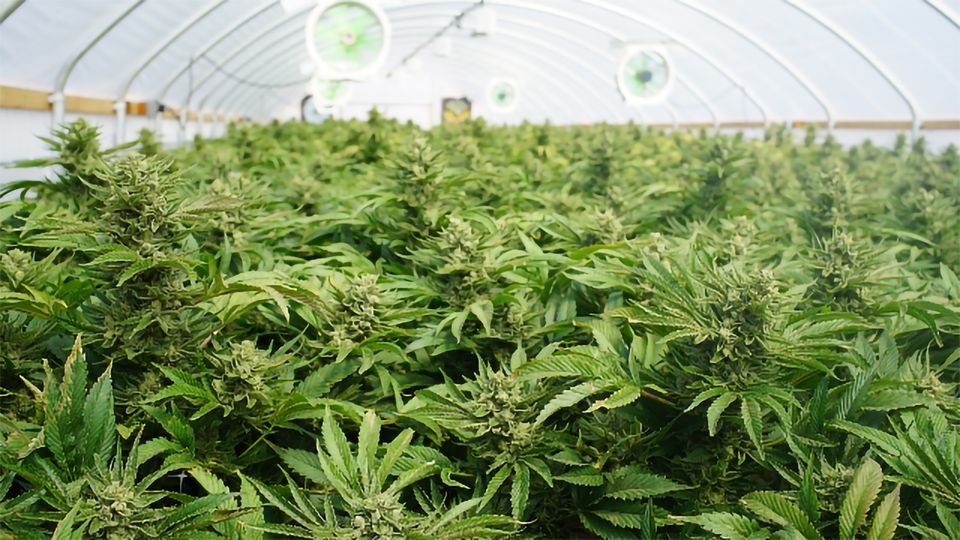
Germination
The first step in cultivating CBD-rich cannabis plants is germination. Here’s how to get started:
- Soak the seeds in a glass of water for 24-48 hours until they sink to the bottom.
- Transfer the seeds to a damp paper towel and place them in a plastic bag.
- Keep the bag in a dark, warm place, maintaining a temperature of around 70-85°F (21-29°C).
- After a few days, the seeds should sprout, and you can transplant them into growing medium.
Choosing a Growing Medium
Selecting the right growing medium is crucial for the health and growth of your Cannabis plants. Common options include:
- Soil: Organic soil is a popular choice for its nutrient-rich properties and natural taste.
- Hydroponics: This soilless method allows for precise control over nutrient levels and can result in faster growth.
- Coco coir: A mixture of coconut fibers, coco coir provides excellent water retention and aeration.
Light and Temperature
Cannabis plants require specific light and temperature conditions for optimal growth:
- Light: Ensure your plants receive 18-24 hours of light during the vegetative stage and 12 hours of light during the flowering stage. High-quality LED or HPS grow lights are commonly used for indoor cultivation.
- Temperature: Maintain a temperature between 70-85°F (21-29°C) during the day and slightly cooler at night to mimic natural conditions.
Nutrients and Watering
Proper nutrition and hydration are essential for your Cannabis plants. Invest in high-quality nutrients designed for cannabis cultivation and monitor your plants for signs of nutrient deficiencies or overfeeding. Water your plants when the top inch of soil feels dry, ensuring they receive adequate hydration without becoming waterlogged.
CBD Plant Care and Maintenance
Pruning and Training
To maximize Cannabis production, consider pruning and training your plants:
- Topping: This involves cutting off the top growth of your plants to encourage bushier growth and more flowering sites.
- LST (Low-Stress Training): Gently bend and tie down branches to create an even canopy and ensure all bud sites receive adequate light.
Pest and Disease Control
Monitor your Cannabis plants regularly for signs of pests or diseases. Preventative measures like using neem oil or introducing beneficial insects can help protect your crop. Early detection and treatment are crucial to maintaining plant health.
pH and Soil Testing
Maintaining the correct pH level of your growing medium is essential for nutrient absorption. Regularly test the pH of your soil or hydroponic solution and adjust it as needed to keep it within the optimal range for cannabis cultivation, typically between 6.0 and 7.0.
The CBD Harvest Season
Understanding CBD Harvest Timing
The optimal time to harvest your CBD-rich cannabis plants is a critical factor in determining the quality and potency of your yield. Harvest timing primarily depends on the maturity of the trichomes, which are the resin glands containing Cannabis and other cannabinoids.
Trichome Maturation
To assess trichome maturity, use a magnifying tool to examine the resin glands on the flowers:
- Clear trichomes: At this stage, the Cannabis content is minimal, and THC levels are higher, leading to a more psychoactive effect. Harvesting at this point is not recommended for CBD-rich plants.
- Cloudy trichomes: The ideal time for harvesting CBD-rich plants is when the majority of trichomes appear cloudy or milky. At this stage, the Cannabis content is at its peak, and THC levels are lower, resulting in a milder psychoactive effect.
- Amber trichomes: If you prefer a more relaxed or sedative effect, wait until some of the trichomes turn amber. However, be cautious, as this can decrease the overall Cannabis content.
Harvesting CBD Plants
Once you’ve determined that your trichomes are at the desired stage, it’s time to harvest your CBD-rich cannabis plants:
- Use clean, sterilized pruning shears to cut each branch with care.
- Trim away any excess leaves to expose the buds.
- Hang the trimmed branches upside down in a cool, dark, and well-ventilated space for drying.
Drying and Curing
Proper drying and curing are crucial for preserving the quality and flavor of your Cannabis buds:
- Hang the branches in a dark room with a temperature of around 60-70°F (15-21°C) and humidity of 45-55%.
- Allow the buds to dry slowly over 7-14 days, depending on humidity levels.
- Once dry, transfer the buds to airtight containers, such as glass jars, and store them in a cool, dark place.
- Burp the containers daily for the first few weeks to release excess moisture and promote proper curing.
CBD Harvest Season Tips and Considerations
Outdoor vs. Indoor Harvest
The ideal harvest season can vary based on whether you’re growing Cannabis plants outdoors or indoors:
- Outdoor Harvest: In most regions, the best time to harvest Cannabis plants outdoors is typically in the early to mid-fall, when the days become shorter, and the temperature drops. Keep an eye on the trichome maturation to determine the precise harvest time.
- Indoor Harvest: Indoor growers have more control over environmental conditions and lighting, allowing them to harvest Cannabis plants year-round. Adjust the light cycle to initiate the flowering stage when desired.
Be Patient
Patience is key when it comes to harvesting CBD-rich cannabis plants. Rushing the harvest can result in lower Cannabis content and overall quality. Regularly monitor the trichomes and be prepared to wait for the optimal time.
As you embark on your journey to cultivate CBD-rich cannabis, keep these key takeaways in mind:
- Start with high-quality CBD seeds: Begin your cultivation process with reputable and well-documented Cannabis seeds to ensure the best possible yield and cannabinoid profile.
- Cultivate with care: Pay close attention to environmental factors such as light, temperature, humidity, and nutrient levels to create optimal growing conditions for your Cannabis plants.
- Monitor plant health: Regularly inspect your plants for signs of pests, diseases, or nutrient deficiencies and take prompt action to address any issues that may arise.
- Harvest at the right time: The timing of your Cannabis plant’s harvest is critical. Wait until the trichomes are predominantly cloudy or milky to maximize Cannabis content while minimizing THC levels.
- Dry and cure properly: Proper drying and curing procedures are crucial for preserving the flavor, aroma, and overall quality of your Cannabis buds.
- Stay compliant with the law: Ensure that you are aware of and adhere to all local and national laws and regulations related to cannabis cultivation and use.
Conclusion
Cultivating CBD-rich cannabis plants is a rewarding endeavor that requires careful consideration of Cannabis seeds, cultivation techniques, and the timing of the harvest season. With the right knowledge and dedication, you can produce high-quality Cannabis products for personal use or even join the burgeoning Cannabis industry. Remember to always adhere to local laws and regulations regarding cannabis cultivation and use, and consult with experienced growers or professionals if you’re new to the process.

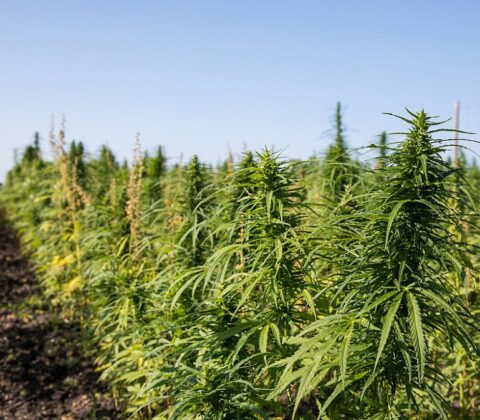
Hemp History
Hemp is an ancient plant that has been cultivated for millennia. The Columbia History of the World (1996) states that that weaving of hemp fiber began over 10,000 years ago! Carbon tests have suggested that the use of wild hemp dates as far back as 8000 B.C.
In Great Britain, hemp cultivation dates back to 800AD. In the 16th Century, Henry VIII encouraged farmers to plant the crop extensively to provide materials for the British Naval fleet. A steady supply of hemp was needed for the construction of battleships and their components. Riggings, pendants, pennants, sails, and oakum were all made from hemp fiber and oil. Hemp paper was used for maps, logs, and even for the Bibles that sailors may have brought on board.
Hemp Drying:
17th Century America, farmers in Virginia, Massachusetts and Connecticut were ordered by law to grow Indian hemp. By the early 18th centuryC, a person could be sentenced to jail if they weren’t growing hemp on their land! Hemp was considered to be legal tender. For over 200 years in colonial America, hemp was currency that one could use to pay their taxes with! (Don’t try that today, kids!)
The 1850 U.S. census documented approximately 8,400 hemp plantations of at least 2000 acres. Strains in cultivation included China hemp, Smyrna hemp and Japanese hemp.
For years, hemp farmers used a hand break operated machine when harvesting. Finally a machine was built that would take care of all the processes, breaking the retted stalks and cleaning the fiber to produce clean, straight hemp fiber which was equal to the best grades prepared on hand brakes. This machine was able to harvest 1000 pounds or more of clean hemp fiber per hour. This breakthrough made cultivating more fiscally attractive by reducing labor costs. By 1920 the hemp crop was entirely handled by machinery.
Hemp Fuel:
In 1896 Rudolph Diesel had produced his famous engine. Like many others, Diesel assumed that the diesel engine would be powered by a variety of fuels, especially vegetable and seed oils. Henry Ford of the Ford Motor Company seeing the potential of biomass fuels operated a successful biomass conversion plant producing hemp fuel at their Iron Mountain facility in Michigan. Ford engineers extracted methanol, charcoal fuel, tar, pitch, ethyl acetate and creosote, fundamental ingredients for modern industry. Today these are supplied by oil-related industries.
Prohibition
Viewing hemp as a threat, a smear campaign against hemp was started by competing industries, associating hemp with marijuana.
Propaganda films like “Reefer Madness” assured hemp’s demise.
When Congress passed the Marijuana Tax Act in 1937, the decline of hemp effectively began. The tax and licensing regulations of the act made hemp cultivation nearly impossible for American farmers. Anslinger, the chief promoter of the Tax Act, argued for anti-marijuana legislation around the world.
An interesting situation arose during World War II as American Farmers were prohibited from producing hemp because of the 1937 law. However, the Japanese attack on Pearl Harbor halted the importation of Manila hemp from the Philippines, prompting the USDA to rethink their agenda and creating a call to action with the release of the film Hemp for Victory, motivating American Farmers to grow hemp for the war effort. The government formed a private company called War Hemp Industries to subsidize hemp cultivation. One million acres of hemp were grown across the Midwest as part of this program. As soon as the war ended, all of the hemp processing plants were shut down and the industry again disappeared. However, wild hemp may be found scattered across the country.
From 1937 until the late 1960s the United States government recognized that Industrial Hemp and marijuana were two distinct varieties of the cannabis plant. After the Controlled Substances Act was passed, hemp was no longer recognized as being distinct from marijuana.